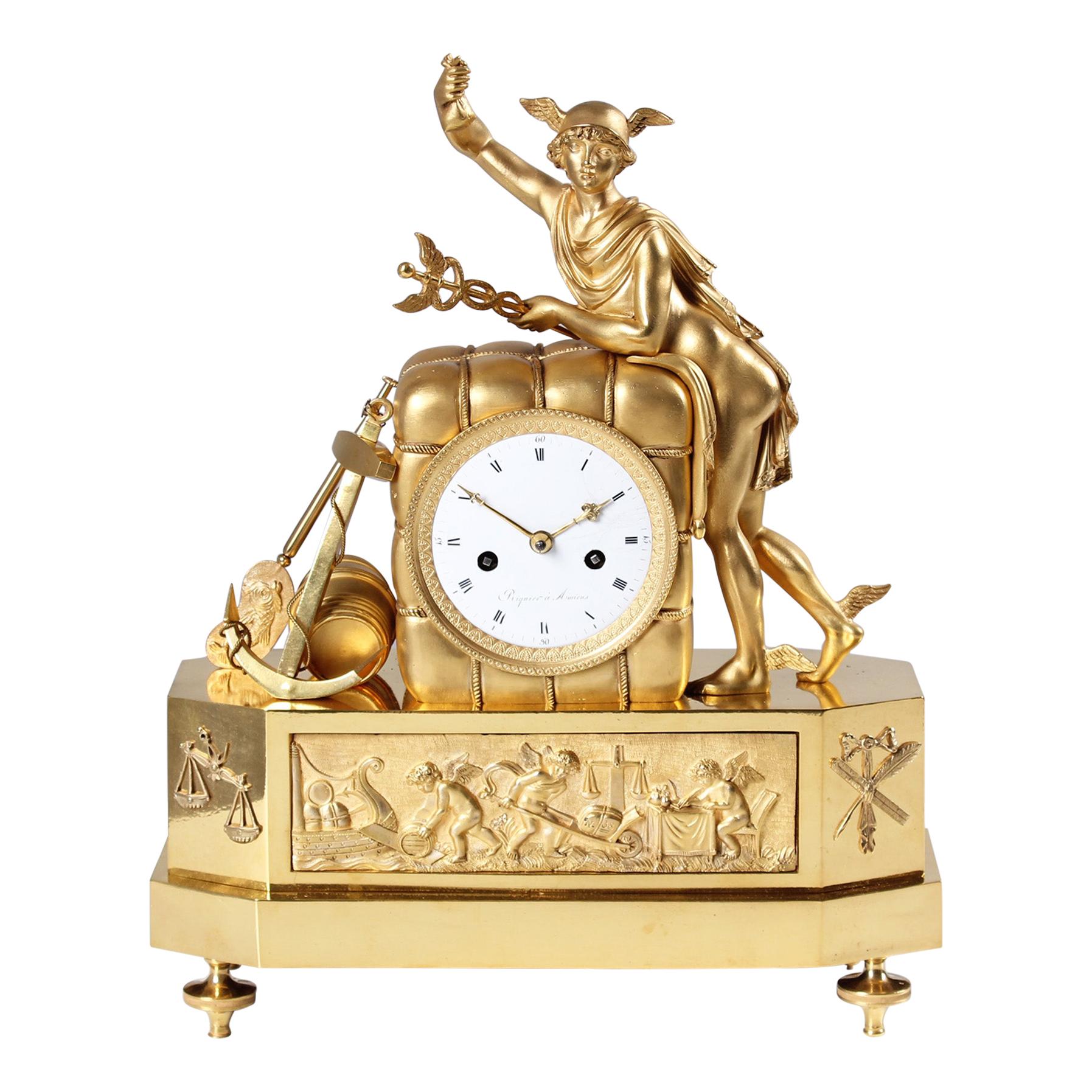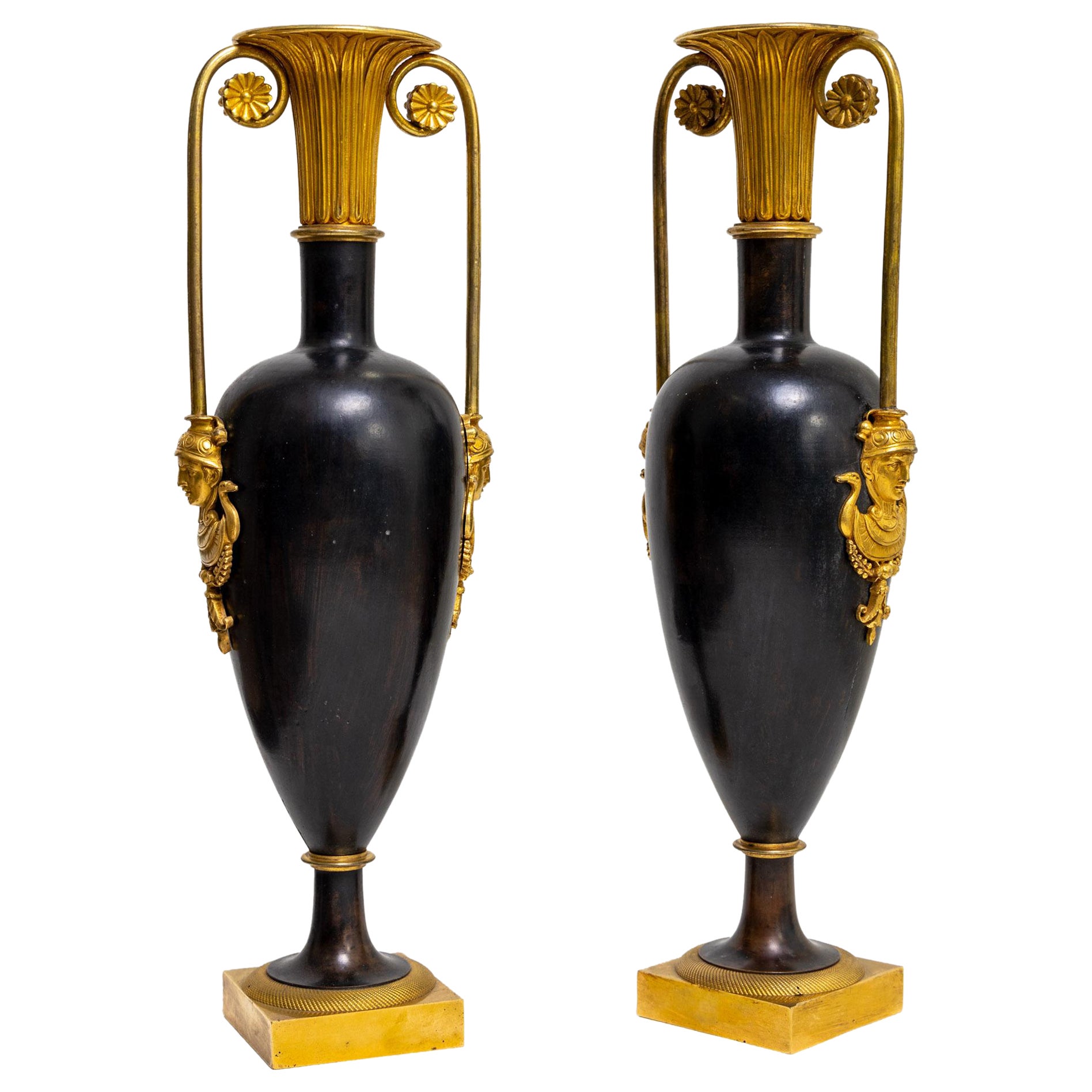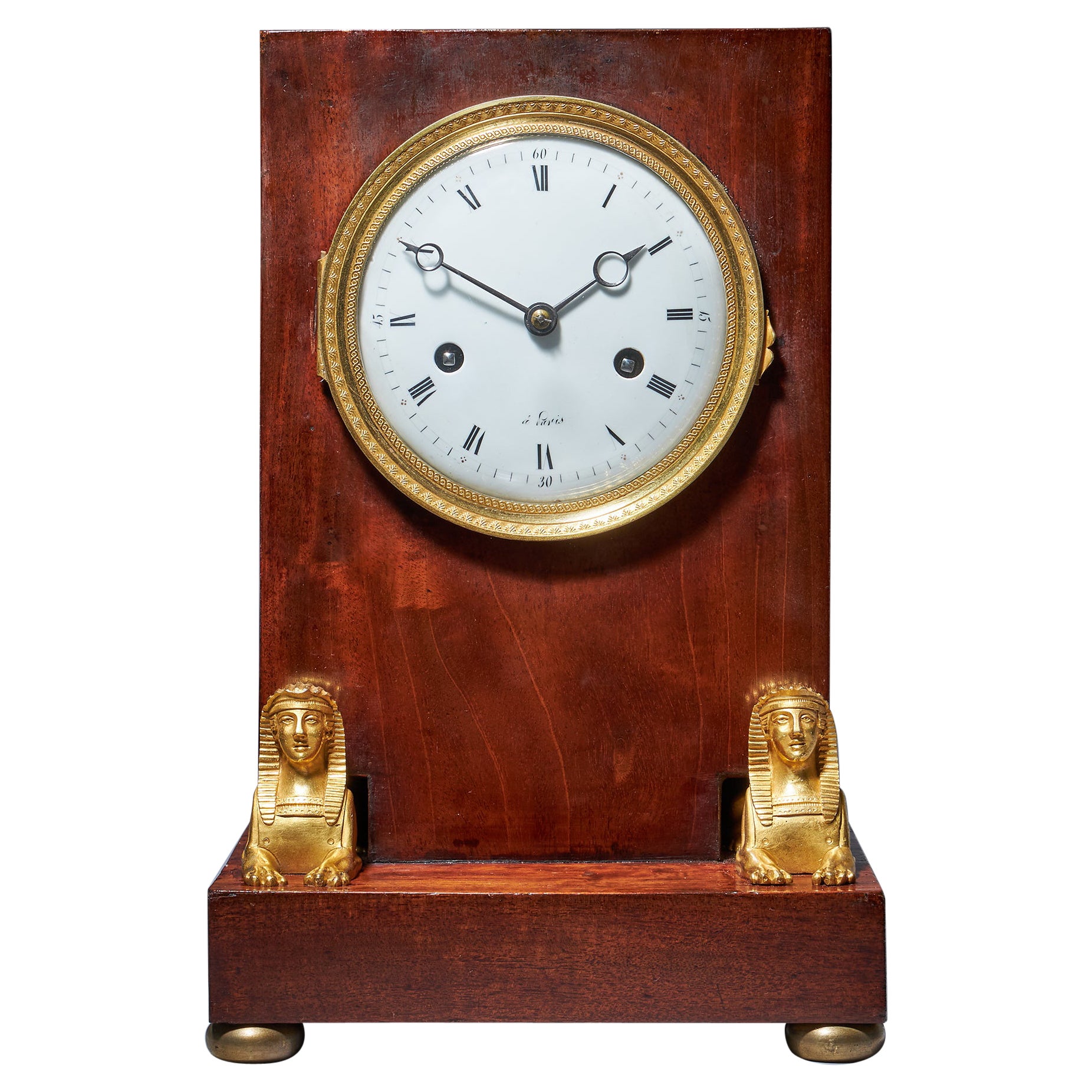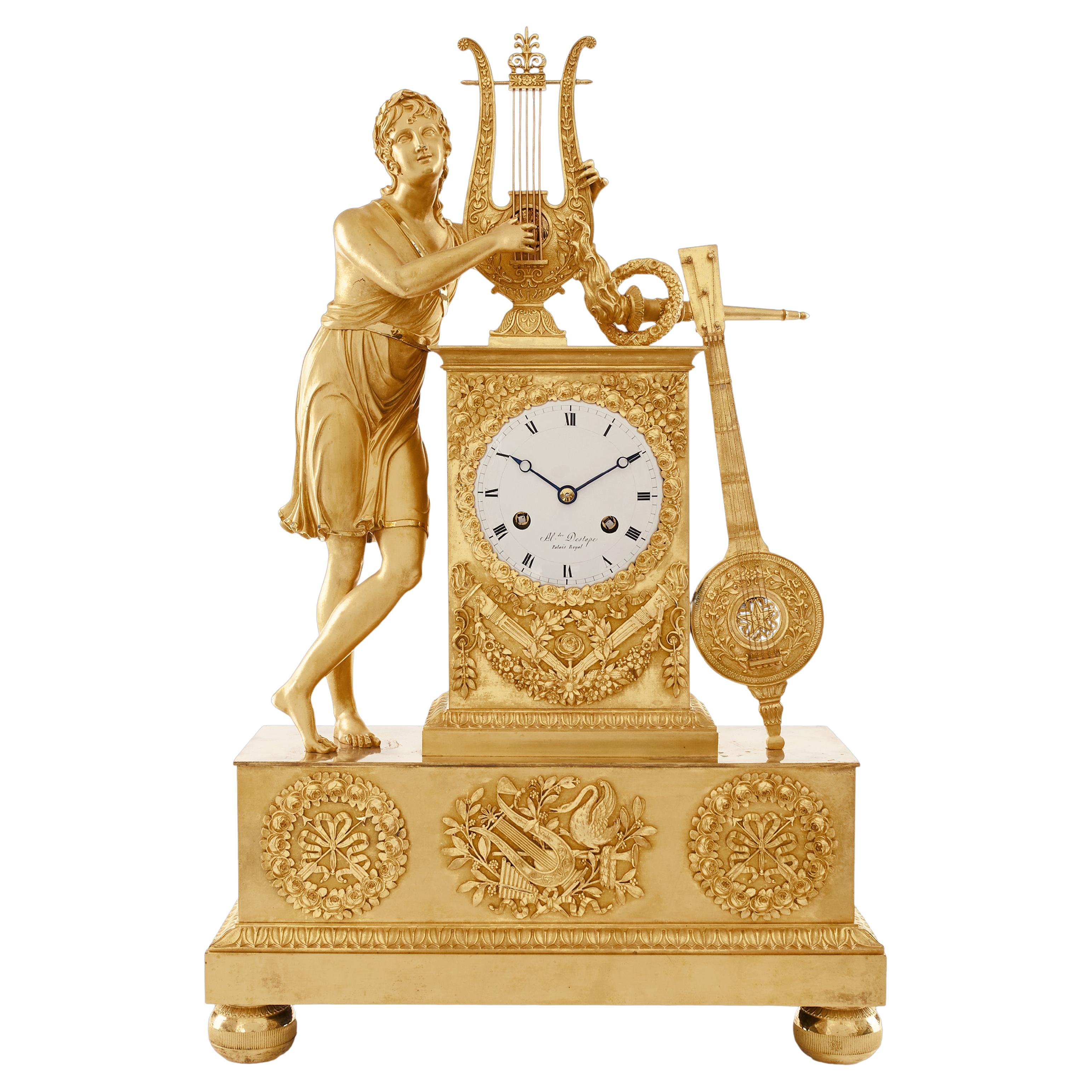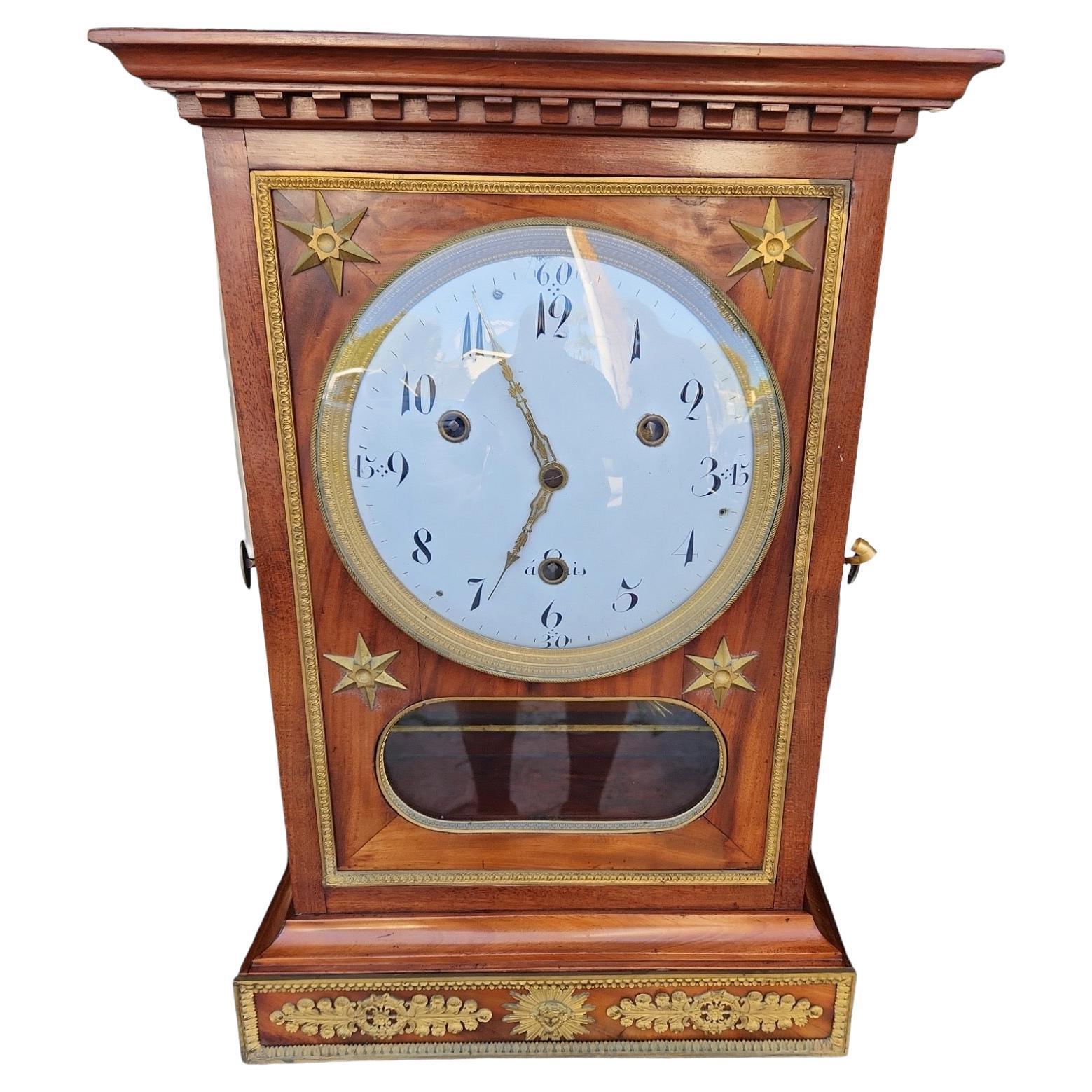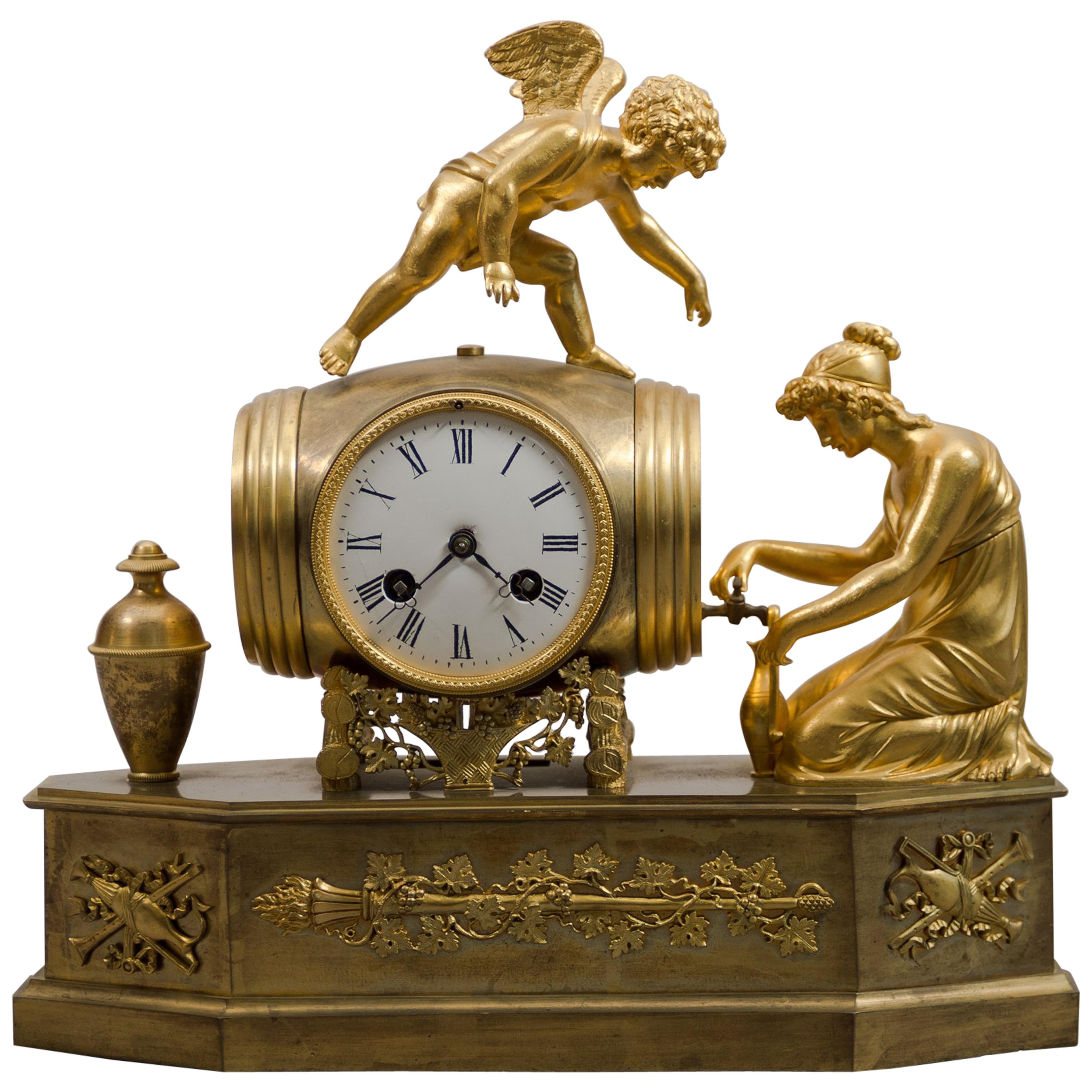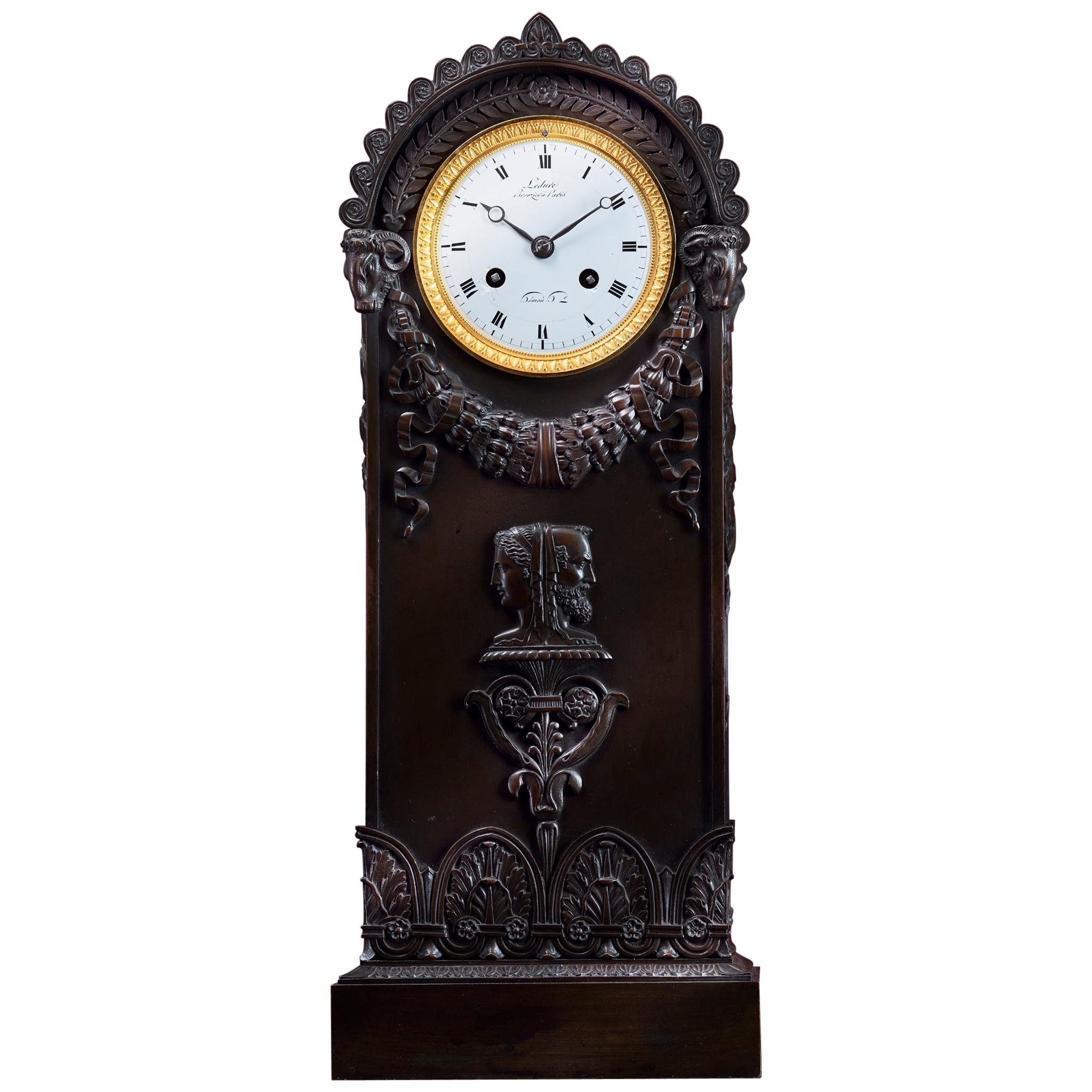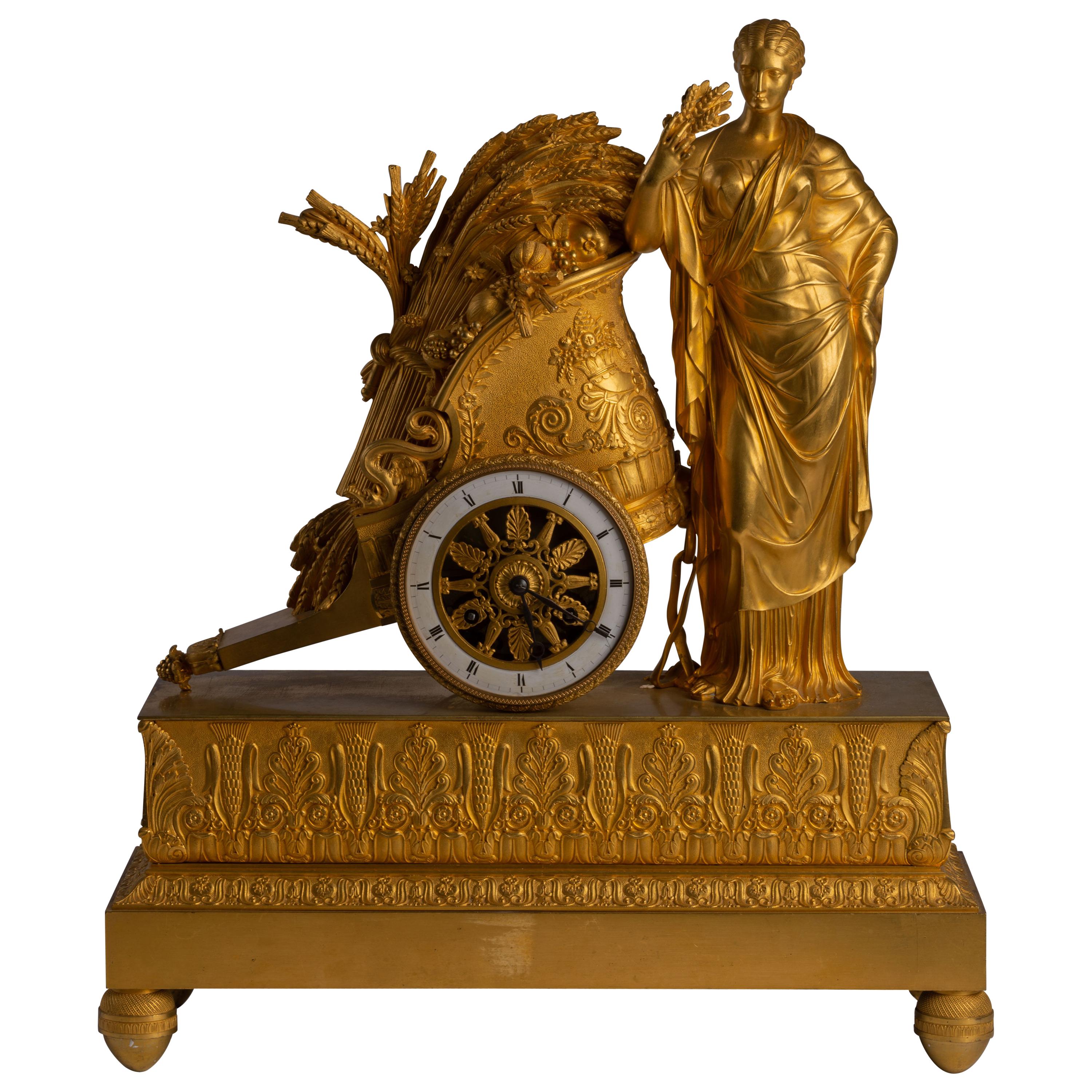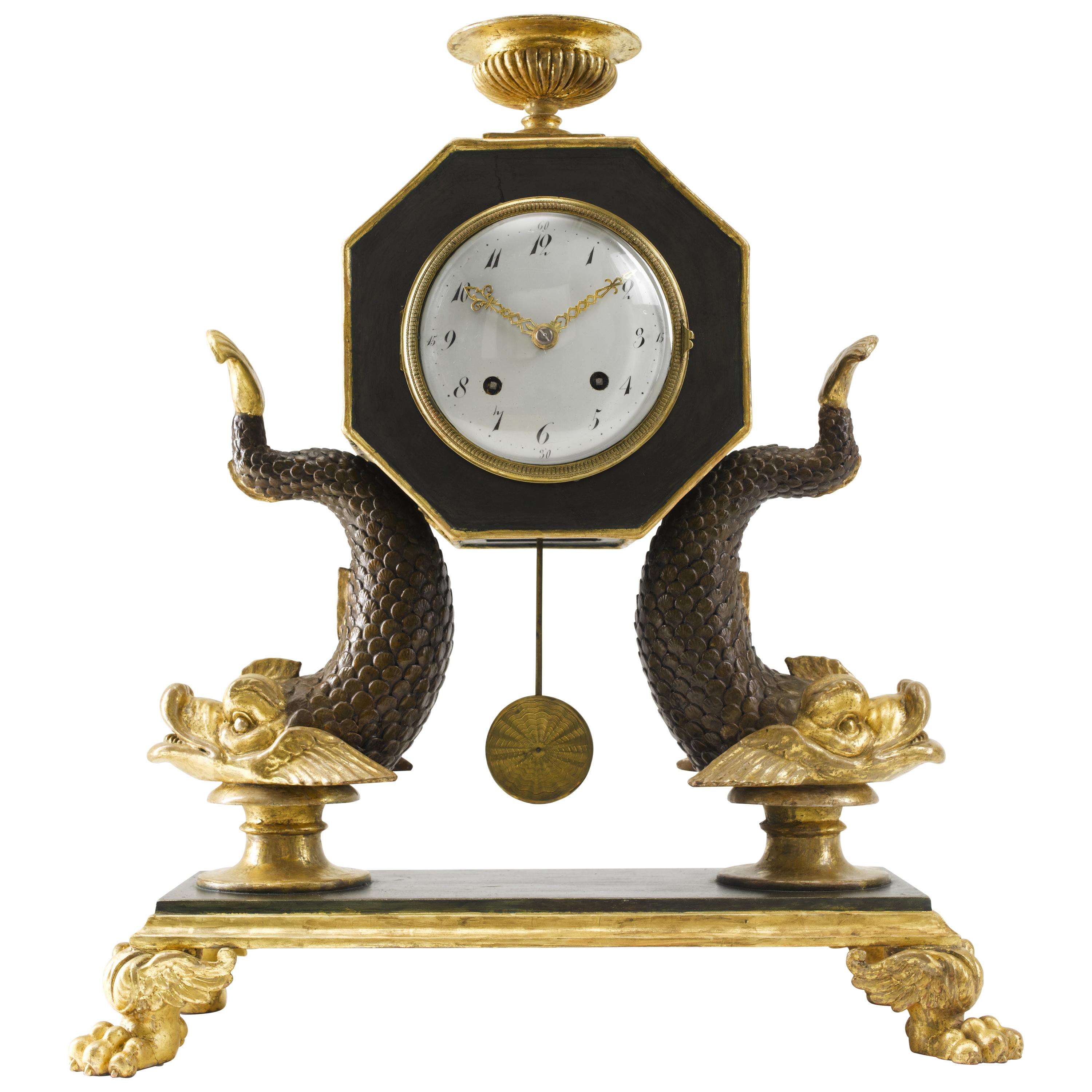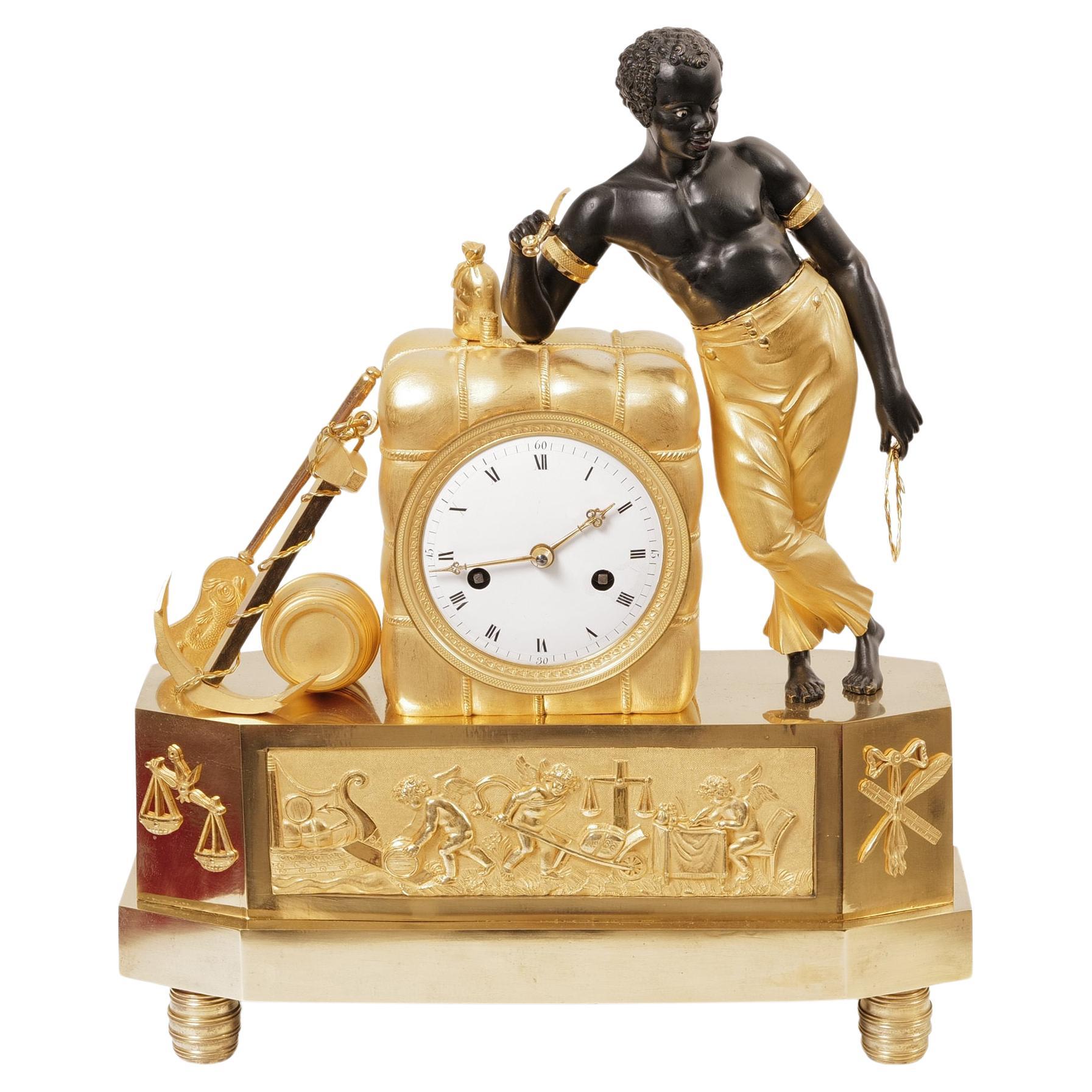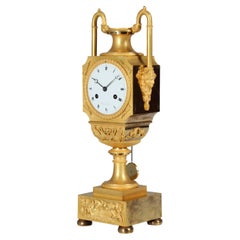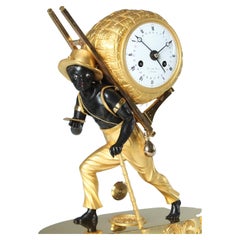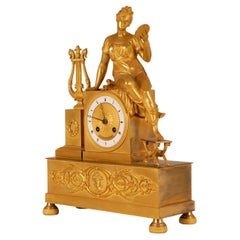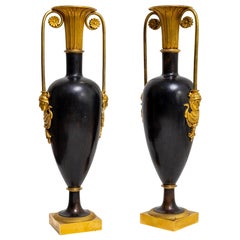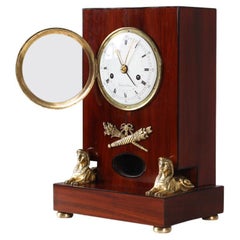
Early 19th Empire Mantel Clock, French Pendule, Retour d'Egypte, Mahogany
View Similar Items
Video Loading
Want more images or videos?
Request additional images or videos from the seller
1 of 20
Early 19th Empire Mantel Clock, French Pendule, Retour d'Egypte, Mahogany
About the Item
- Dimensions:Height: 13.78 in (35 cm)Width: 9.45 in (24 cm)Depth: 6.7 in (17 cm)
- Style:Empire (Of the Period)
- Materials and Techniques:
- Place of Origin:
- Period:
- Date of Manufacture:1810
- Condition:Refinished. Wear consistent with age and use. Completely restored and excellent condition of the movement and the case.
- Seller Location:Greven, DE
- Reference Number:1stDibs: LU5419225804232
About the Seller
5.0
Platinum Seller
These expertly vetted sellers are 1stDibs' most experienced sellers and are rated highest by our customers.
Established in 2014
1stDibs seller since 2020
112 sales on 1stDibs
More From This SellerView All
- 19th French Empire Mantel Clock, Pendule, Mercury, Gilded Bronze, circa 1815Located in Greven, DE19th century French pendule, mantel clock - Mercury the messenger of the gods France Bronze gilded Empire around 1815 Dimensions: H x W x D: 37 x 30 x 10 cm Description: French Empire...Category
Antique Early 19th Century French Empire Mantel Clocks
MaterialsBronze
$6,683 Sale Price30% Off - Early 19th Century Vase Pendule, Pendulum-Clock, Tardy à Lyon, Empire circa 1820Located in Greven, DEAntique vase clock France Fire gilded bronze Empire around 1820 Dimensions: H x W x D: 41 x 13 x 12 Description: Beautiful all gilt French mantel clock. The basic form is in the shape of an urn vase with lid...Category
Antique Early 19th Century French Empire Mantel Clocks
MaterialsBronze, Enamel
- Early 19th Century Pendule Portefaix, Firegilt Bronze, Empire, Circa 1810Located in Greven, DEPendule Portefaix France (Toulouse) bronze, enamel Empire around 1810 Dimensions: H x W x D: 36 x 28 x 11 cm Description: Beautiful fire-gilded and patinated bronze pendulum from the early 19th century. Depicted is a young man carrying a large cotton package on his back. In his right hand he holds a letter, with his left he is leaning on a bamboo stick. His tobacco pipe is stuck in his hat string, and he carries his water bottle on his belt. In interesting color contrast is not only the fire gilding to the deep black patinated bronze, but also particularly striking are the white glass eyes. The ciselleur has managed to make materials tangible through different surface treatments. For example, the skin is discreetly hatched differently from the cotton fabric of the trousers; the bottle, bracelets and pannier are polished in gold. The proportions of the figure are perfectly struck, and the drapery on the trousers emphasizes the dynamic movement. The heart of the watch is an 8-day movement with date from the Prevost Freres workshop, which is attested in Toulouse from 1809. The Breguet hands are blued, the pendulum is suspended on a thread, typical of the time. The clock strikes a bell on the half and full hour. Fun Facts: The depiction of Le Portefaix is by Parisian bronze caster Jean-André Reiche, who registered his artistic design in Paris in 1808. In addition to the depiction of the cotton picker, there are numerous other pendulums that deal with the theme of colonization. Other themes from the "new world" were also treated artistically - exotic animals and plants - butterflies, birds of paradise, tobacco and spices.... Today's viewers react to the objects with both fascination and irritation. Enthusiastic on the one hand by the obvious quality of the detailed bronzes, on the other hand distanced-cautious because of the possible discrimination that is suspected behind it. The ambivalence of this feeling motivates the search for the conditions of origin of these pendulums. Europeans found their new ideal of the natural man mainly in fictional and realistic travelogues about the Indians of North America...Category
Antique Early 19th Century French Empire Mantel Clocks
MaterialsBronze
- Early 19th Century Mantel Clock, Firegilt Bronze, Paris circa 1810Located in Greven, DEVery rare "Au Bon Sauvage" mantel clock France Fire-gilt and patinated bronze Empire around 1810 Dimensions: H x W x D: 34 x 41 x 13 cm Description: Extremely rare French bronze m...Category
Antique Early 19th Century French Empire Mantel Clocks
MaterialsBronze
- Early 19th Century Ormolu Mantel Clock, Atala freeing Chactas, Paris, circa 1810Located in Greven, DEMantel Clock "Atala and Chactas" Paris Bronze (fire-gilt and patinated), enamel Empire around 1810 Dimensions: H x W x D: 40 x 32 x 11 cm Description: Very rare and extremely high quality French mantel clock, so-called Pendule Au Bon Sauvage. Depicted are scenes from the love story "Atala or the love of two savages in the desert" written by Francois René Vicomte de Chateaubriand in 1801. At the beginning of the 19th century, this was probably the most famous love story in Europe, but today it has been forgotten. The story, set in present-day Louisiana (USA), is roughly rewritten about the forbidden love between Chactas, a young Indian, and Atala, the beautiful daughter of a Spaniard. Chactas is captured in a battle between two Indian tribes, chained to a palm tree and is to be sacrificed. Atala wants to save his life and convert him to Christianity. She unties him from the palm tree at night and they flee together into the wilderness of North America. Their love for each other grows stronger and stronger and they have prospects for a future together. The story takes a tragic turn when Atala, who must remain a virgin due to a vow made by her mother, can no longer withstand the conflict of her feelings and commits suicide. The main group of characters thus shows Chacta's liberation through Atala. Atala is leaning against a pile of logs. The animal fur thrown over the logs and the weapons leaning against the stack on the right give the impression of a night camp. The bronze is of rarely beautiful quality, finely chiselled and makes the scene appear very lively. The contrast of fire-gilded and patinated bronze adds tension to the composition. In the base we see the Entombment as the end of the tragic love story. This bronze work is also very detailed, the interplay of bright and matt gilding makes the flat relief appear much deeper than it is. The depiction of the mantel clock presented here shows that the exotic was only known from stories and that the bronzier had his own ideas about the appearance of this distant world. The Indian, for example, has very European facial features and his skin was not black in reality, of course. The palm tree was also certainly not found in the North American wilderness. The heart of the clock is a French pendulum movement, integrated into the wooden pile, with an eight-day power reserve and a lock plate striking a bell on the half and full hour. The pendulum is suspended on a thread, typical of the period. The classically shaped hands, so-called Breguet hands, are also typical of the time. The enamelled dial has black Roman hour numerals, Arabic quarter hours and bears the signature: Le Roy hr. de Madame A PARIS. Interesting facts: The period from 1795 to about 1815 saw the creation of probably the most spectacular group of bronzes: The "Au bon Sauvage" pendulums - depictions of the "Noble Savage". Today's viewers react to these objects with both fascination and irritation. Enthusiastic on the one hand about the obvious quality of the detailed bronzes and the allure of the exotic, on the other hand distanced and cautious because of the possible discrimination that is suspected behind them. The ambivalence of this feeling motivates the search for the conditions of origin of these pendulums. Europeans found their new ideal of the natural man primarily in fictional and realistic travelogues about the Indians of North America...Category
Antique Early 19th Century French Empire Mantel Clocks
MaterialsOrmolu
- 19th Century French Ormolu Mantel Clock, circa 1840Located in Greven, DE19th Century French mantel clock France (Limoges) Ormolu around 1840 Dimensions: H x W x D: 37 x 22 x 10 cm Description: The bronze, cast in relief and then fire-gilded, stands on...Category
Antique 1830s French Charles X Mantel Clocks
MaterialsMarble, Bronze, Ormolu
You May Also Like
- 19th Century Empire Thomire Gilt Bronze Mantel Clock Pendule FrenchBy Pierre-Philippe ThomireLocated in Wommelgem, VANAntique French 1st Empire pendulum clock fire gilded bronze. Attributed to Pierre-Philippe Thomire. Depicting Laura de Noves Laura was the wife of Count Hugues de Sade. She married in the year 1325 at the age of 15. Laura had a great influence on the life and work of the Italian Poet Fransesco Petrarca. He sang about her in his work Il Canzoniere The fineness of the casting and the original fire gilding and varied chasing show the highest quality. Like almost all pendulums of this period it isn't signed. The quality , the bronze work, the composition, the gilding and the chasing allow to consider Pierre-Philippe Thomire (1751 - 1843) as maker. Origin France about 1810 - 1820. An identical clock was part of the the Louvre collection...Category
Antique Early 19th Century French Empire Mantel Clocks
MaterialsGold Plate, Bronze
- Retour D'egypte Vases, Early 19th CenturyLocated in Greding, DEPair of vases made of fire-gilded and burnished bronze with Retour d'Egypte-style decorative elements.Category
Antique Early 19th Century French Egyptian Revival Vases
MaterialsBronze
$7,052 / set - 19th Century French Flame Mahogany Napoleon Empire Period Mantel ClockBy Breguet a ParisLocated in Oxfordshire, United KingdomA superb 19th century French Flame Mahogany Napoleon Empire Period Egyptian style Mantel Clock This clock was produced in the Fr...Category
Antique 19th Century French Empire Mantel Clocks
MaterialsBrass
Unavailable$8,613Free Shipping - Mantel Clock 19th Century EmpireLocated in Warsaw, PLFigural mantel clock signed “Al. dre Destape Palais Royal” The bronze figural mantel clock depicting one of the mythical heroes - Orpheus originates from the Empire period. The cloc...Category
Antique Early 19th Century French Empire Mantel Clocks
MaterialsBronze
- 19th Century Empire Mantel ClockLocated in Los Angeles, CAExcellent condition with finely chased dore bronze mounts. Has key and pendulum.Category
Antique Early 19th Century French Empire Mantel Clocks
MaterialsBronze
- Early 19th Century French Empire Ormolu Mantel Clock "Pouring Wine"Located in Los Angeles, CAA fine Early 19th century French Empire ormolu bronze mantel clock. Depicting a winged cherub standing atop a barrel while a kneeling lady pouring wine ...Category
Antique 19th Century French Empire Mantel Clocks
MaterialsBronze
Recently Viewed
View AllMore Ways To Browse
Antique Glass Mantel Clocks
Early 19th Century Napoleon Bonaparte
French Brass Antique Mantel Clock
Large Antique Mantel Clocks
Antique Mahogany Campaign Chest
Four Glass Mantel Clock
Brass Sphinx
Napoleon Sphinx
Antique Steel Windows
French Empire Antique Clocks
Clock Of Ebony
Watch Chest
Egypt Mantel
French Four Glass Mantel Clock
Empire Secretary Mahogany
Ebony Chest Of Drawers Antique
Standing Torch
Campaign Secretary

